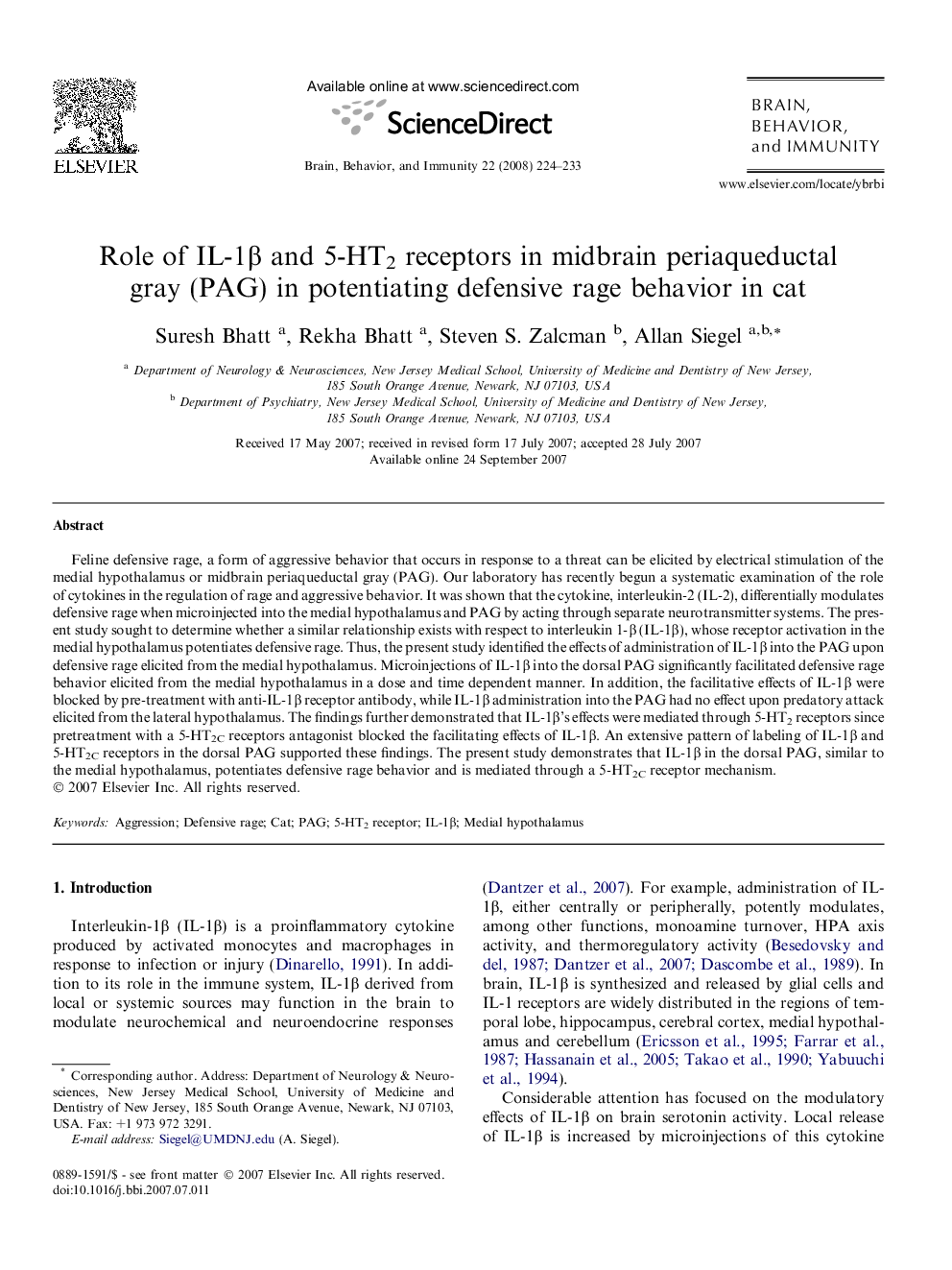| Article ID | Journal | Published Year | Pages | File Type |
|---|---|---|---|---|
| 923220 | Brain, Behavior, and Immunity | 2008 | 10 Pages |
Feline defensive rage, a form of aggressive behavior that occurs in response to a threat can be elicited by electrical stimulation of the medial hypothalamus or midbrain periaqueductal gray (PAG). Our laboratory has recently begun a systematic examination of the role of cytokines in the regulation of rage and aggressive behavior. It was shown that the cytokine, interleukin-2 (IL-2), differentially modulates defensive rage when microinjected into the medial hypothalamus and PAG by acting through separate neurotransmitter systems. The present study sought to determine whether a similar relationship exists with respect to interleukin 1-β (IL-1β), whose receptor activation in the medial hypothalamus potentiates defensive rage. Thus, the present study identified the effects of administration of IL-1β into the PAG upon defensive rage elicited from the medial hypothalamus. Microinjections of IL-1β into the dorsal PAG significantly facilitated defensive rage behavior elicited from the medial hypothalamus in a dose and time dependent manner. In addition, the facilitative effects of IL-1β were blocked by pre-treatment with anti-IL-1β receptor antibody, while IL-1β administration into the PAG had no effect upon predatory attack elicited from the lateral hypothalamus. The findings further demonstrated that IL-1β’s effects were mediated through 5-HT2 receptors since pretreatment with a 5-HT2C receptors antagonist blocked the facilitating effects of IL-1β. An extensive pattern of labeling of IL-1β and 5-HT2C receptors in the dorsal PAG supported these findings. The present study demonstrates that IL-1β in the dorsal PAG, similar to the medial hypothalamus, potentiates defensive rage behavior and is mediated through a 5-HT2C receptor mechanism.
